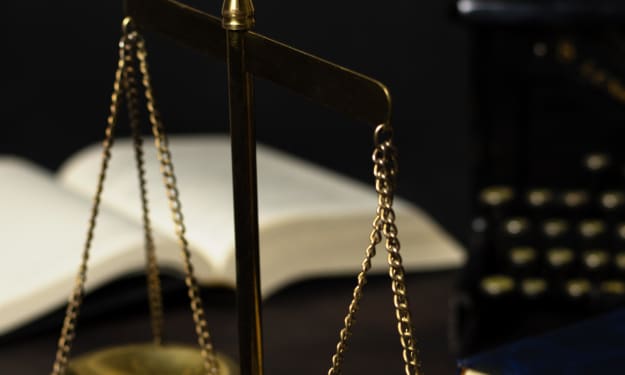
Introduction:
Protecting people's safety and wellbeing is of utmost significance in the state of Virginia. The Virginia Protective Order is a crucial legal measure that can be used when someone is concerned for their safety as a result of threats, assault, or harassment. This complete book seeks to give readers a broad grasp of Virginia protective orders—what they are, how to get one, how important they are to protecting victims, and what resources are available to people who need them.
A Virginia Protective Order: What Is It?
A Virginia Protective Order, commonly referred to as a restraining order, is a court-issued document that offers protection to people who have been the target of threats, assault, stalking, or other forms of harassment. It is intended to keep a safe distance between the accuser and the victim and to stop any interaction that would endanger or upset the petitioner.
The main goal of a protective order is to establish a legally binding barrier that gives the victim security and assurance while allowing law enforcement to take action if the responder violates the order. These directives are essential in stopping potential violence from escalating and providing immediate safety to individuals in risk.
1. Virginia Protective Order Types:
Protective Orders are available in Virginia in a variety of forms, each of which deals with a distinct situation. For victims seeking suitable legal protection, understanding the differences between these orders is essential:
a. Emergency Protective Order (EPO):
A court or magistrate may issue an Emergency Protective Order (EPO) in cases of urgent danger. It can be asked for by the police on behalf of the victim and is valid for 72 hours, or until the court reopens on the next business day.
When police enforcement responds to a domestic violence event and there is evidence of a persistent threat to the victim's safety, an EPO is frequently requested. In order to give the victim time to seek additional legal action, such as obtaining a Preliminary or Permanent Protective Order, it offers an instant, temporary layer of protection.
b. Preliminary Protective Order (PPO):
A PPO can be requested from the court and offers protection for up to 15 days. While the court considers the request for a longer-lasting protective order, it provides short-term respite.
The petitioner must provide proof of the necessity for protection in order to receive a PPO. This evidence could be in the form of in-depth descriptions of prior instances, witness statements, medical files, images, or police reports. If the petitioner is believed to be in immediate danger, the court will assess the evidence that has been submitted and make that determination.
c. Permanent Protective Order (PPO):
A PPO can be obtained following a thorough court hearing and has a two-year maximum duration with the option of renewal. It demands proof of persistent mistreatment or verifiable safety threats to the petitioner.
The petitioner must appear in court for a hearing where both parties can argue their positions in order to obtain a PPO. The petitioner must show that they are in a qualifying relationship with the respondent, that they have been subjected to or are likely to be subjected to abuse, violence, or harassment, and that this relationship exists. If the court concludes that the evidence is convincing, a PPO will be issued, giving the petitioner more extensive protection.
2. Virginia Protective Order Eligibility:
The petitioner and respondent need to be in a qualifying relationship for them to be eligible for a Virginia protective order. Such relationships may include spouses, former spouses, parents of the same child, household members, individuals who share a child, or those who have had a dating relationship within the last year.
Qualifying relationships are essential to ensure that the Protective Order is granted to those who genuinely need protection from individuals with whom they have a significant personal connection. This requirement prevents the misuse of Protective Orders for ulterior motives or harassment purposes.
3. Grounds for Obtaining a Protective Order:
To secure a Protective Order, the petitioner must demonstrate that they are in immediate and present danger of abuse, bodily injury, or stalking. Providing evidence is crucial in substantiating the claims and convincing the court of the necessity for protection.
4. Evidence presented may include:
a. Police reports:
If any incidents have been reported to law enforcement, these reports can serve as crucial evidence.
b. Medical records:
If the victim sought medical attention for injuries sustained during the abuse, these records can corroborate their claims.
c. Photographs:
Providing visual proof of injuries or property damage caused by the abuse might help your case.
d. Testimonies from witnesses:
Statements from others who saw the assault or harassment may add credence to the petitioner's claims. It is crucial to gather as much proof as you can to make a strong case to the judge and raise your chances of getting a Protective Order.
5. The Virginia Protective Order Application Process:
The steps below are often required in order to get a Virginia Protective Order:
a. Filing the Petition:
Depending on the nature of the connection with the Respondent, the Petitioner starts the procedure by filing a Petition at the local Juvenile and Domestic Relations District Court or General District Court. The court personnel will help the petitioner fill out the required paperwork by outlining the information needed to process the petition.
A temporary hearing may be scheduled to decide whether an Emergency Protective Order or Preliminary Protective Order should be issued if the petitioner's circumstances call for immediate protection. The respondent may not be required to appear at this hearing, which usually takes place soon after the petition is filed.
The petitioner must provide the court with proof during the temporary hearing that emergency protection is required. The petitioner will have a small window of time to get ready for the entire hearing if the court issues an Emergency Protective Order.
b. complete Hearing:
Following the initial filing, a complete hearing is arranged, usually within 15 days. In order to participate in this hearing, the petitioner and respondent must both show up in court. The response has the right to refute the accusations and give their account of what happened.
Both sides may provide proof, testimony, and witnesses during the complete hearing to substantiate their arguments. The petitioner must be organized and composed throughout the hearing because it is a chance to prove the validity of their allegations.
c. Issuance of Protective Order:
The court will issue the proper order to protect the petitioner if it finds adequate evidence and decides that a Protective Order is required. The protection's terms and restrictions will be spelled out in the order, including keeping a certain distance from the petitioner, refraining from all communication, and surrendering any firearms or other weapons.
The terms of the Protective Order must be followed by both parties. The respondent may face substantial legal repercussions for disobeying the order, such as arrest, penalties, or jail.
6. violating a protective order in Virginia:
A significant violation that could result in criminal charges against the respondent is disobeying a Virginia protective order. The court vigorously upholds the terms of Protective Orders to safeguard victims from additional harm.
The petitioner must notify the local law enforcement authorities right once if the respondent violates any of the terms of the Protective Order. In order to resolve infractions and preserve the effectiveness of Protective Orders as measures for protecting safety, prompt action is crucial.
7. Making Changes to or Cancelling a Protective Order:
A move to amend or dissolve the Protective Order may be filed if circumstances alter or the petitioner decides it is no longer required. But it's crucial to follow the law and not just disregard the parameters of the present order.
Any motion to alter or terminate a protective order will be carefully considered by the court. Reconciliation between the parties or a material change in circumstances that renders protection unnecessary are also acceptable justifications for such requests. Before attempting to alter or dissolve a Protective Order, the petitioner should speak with a lawyer or obtain legal counsel.
8. Resources and Assistance Programs:
For those looking for assistance and protection, Virginia offers a wide range of resources and support services. Among these resources are:
a. Domestic Violence Shelters:
Domestic violence shelters offer safe lodging for victims of domestic violence and their children at a number of locations throughout the state.
b. Hotlines:
To support, educate, and aid victims of domestic violence, hotlines are accessible around-the-clock.
c. Legal Aid:
Legal aid groups provide free or inexpensive legal representation to people looking for Protective Orders or other domestic violence-related legal remedies.
d. Counseling and Support Groups:
To assist victims in coping with the emotional and psychological impacts of domestic abuse, several organizations offer counseling services and support groups.
e. Law Enforcement:
In responding to occurrences of domestic violence and executing Protective Orders, local law enforcement agencies are essential.
Conclusion:
Protective orders issued in Virginia are essential for defending people from threats, assault, or harassment from others. Promoting safety and wellbeing in our communities requires an understanding of the different kinds of protective orders, how to acquire one, the importance of following its provisions, and the assistance programs available to victims. The issuing and implementation of Protective Orders is a critical component of upholding justice in the state of Virginia since the legal system works to secure the protection of all residents. An crucial step toward a better and more secure future can be taking the necessary steps to obtain a Virginia Protective Order if you or someone you love is experiencing violence or threats.
About the Creator
DebraJhon
A passionate content writer focused on crafting content on legal matters.






Comments
There are no comments for this story
Be the first to respond and start the conversation.